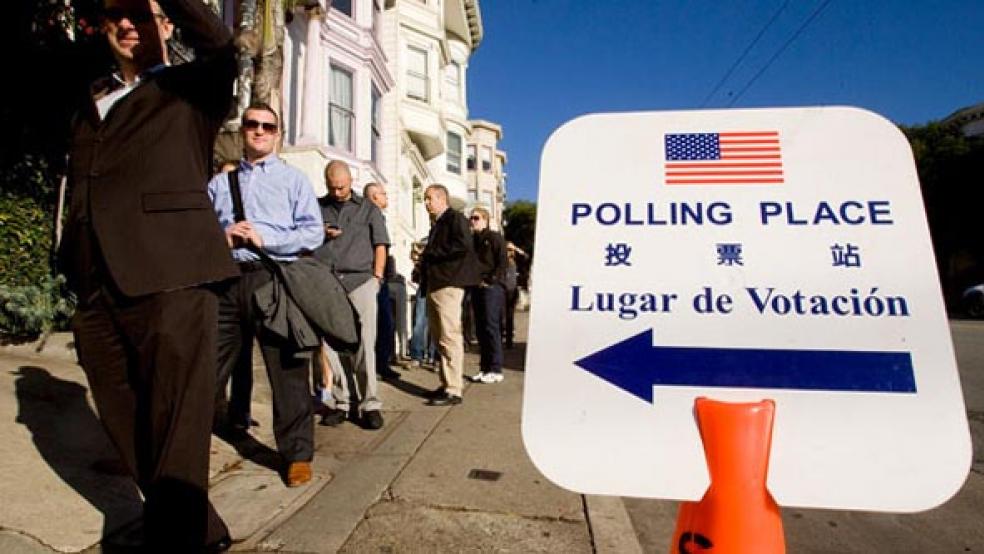Three months after the bitter midterm elections, two months after the National Commission on Fiscal Responsibility and Reform returned its split verdict, and perhaps two months before a self-destructive showdown over the federal debt limit, bipartisan fiscal policy looks like a pipe dream. Republicans know that supporting any tax hike is a political death sentence, which the GOP’s Tea Party wing would be only too glad to execute. Democrats, in turn, know their voters won’t stand for spending cuts in sacred cows like Social Security.
As for what voters do want, the polls offer only magical thinking. Cut the deficit, but don’t touch any of the popular programs that account for 85 percent of the budget, and don’t raise taxes. Stop the bipartisan bickering, but don’t compromise. The people have spoken on fiscal policy, but what they say is incoherent.
Or maybe we aren’t giving them enough credit.
That would be one hopeful interpretation of an intriguing study released last week by the Program for Public Consultation at the University of Maryland. The problem with most opinion surveys on fiscal policy is that they ask respondents to opine on spending or tax options in isolation. (Do you want to cut Social Security? Do you want to raise taxes? Why be surprised when respondents say no?) The Maryland survey instead presented 2,000 voters a complete sample budget for the year 2015 — necessarily simplified but accurately represented, with the help of the National Commission — and asked them to make their own tradeoffs and create their own federal budget.
The results defied the cynical conventional wisdom. Democrats cut spending. Republicans and Tea Party sympathizers raised taxes. People who lived in blue Congressional districts and those who lived in red ones reached remarkably similar solutions on what spending to cut and what taxes to raise, and by how much. Said the study’s researchers: “It is striking that no group — Republican, Democrat, or independents — acted on average in ways that fit their respective media stereotypes.”
Among the most notable results of the exercise:
On average, respondents cut spending and raised taxes, regardless of party affiliation- Overall, the voters in the study cut the hypothetical 2015 budget deficit by 70 percent, with one third of the reduction ($145 billion) coming from spending cuts and two thirds ($291 billion) from revenue hikes. According to stereotype, Democrats should have cut spending the least and Republicans the most, with independents somewhere in between. But that’s not how it played out.
- Republicans actually cut spending the least ($100 billion).
- Democrats cut spending far more than Republicans ($157 billion).
- Independents cut more than either ($195 billion).
- On average, residents of blue districts cut spending more than residents of red districts ($153 billion to $141 billion).
- All agreed, for example, to cut funding for defense, the State Department and the highway system.
- All agreed to increase job training, education and foreign humanitarian assistance.
- Spending decisions split along party lines on categories that included homeland security (only Republicans favored an increase) and mass transit (only Republicans wanted a reduction).
- While Democrats were most inclined to raise individual income taxes (on average they’d raise $178 billion), Republicans and strong Tea Party sympathizers were also willing to lift income taxes significantly ($125 billion and $105 billion, respectively).
- While respondents tended to support raising income taxes on people in higher tax brackets than their own, they were surprisingly willing to accept an increase in their own bracket as well.
- Increasing payroll taxes on high wage earners was the most popular tactic for closing the Social Security funding gap.
Why are the results of this study so at odds with the results of most polls? The key distinction seems to be the information at hand for the respondents. As noted by my Fiscal Times colleague Bruce Bartlett, most voters know little about government spending. They tend to underestimate defense spending (five times the amount any other country spends), for example, and grossly overestimate the amount going to foreign aid (about 1 percent). Asked to make choices with realistic budget information at hand, it’s interesting that the average voter in the Maryland study arrived at a solution closer to the National Commission’s and Center for Policy Priority bipartisan plans than their own political party’s platform.
Of course it is still the largely uninformed voters that lawmakers have to answer to on Election Day. Still, it’s hard not to feel somewhat cheered by the results of this study. Congress may be a polarized place on fiscal policy. But America, given the right information, doesn’t have to be.
Related Links
When Will Voters Care about the Deficit? (The Economist)
Voters Actually Concerned about U.S. Deficit (Daily Reckoning)
Voters Favor Lower Spending to Close Deficit (Reuters)






